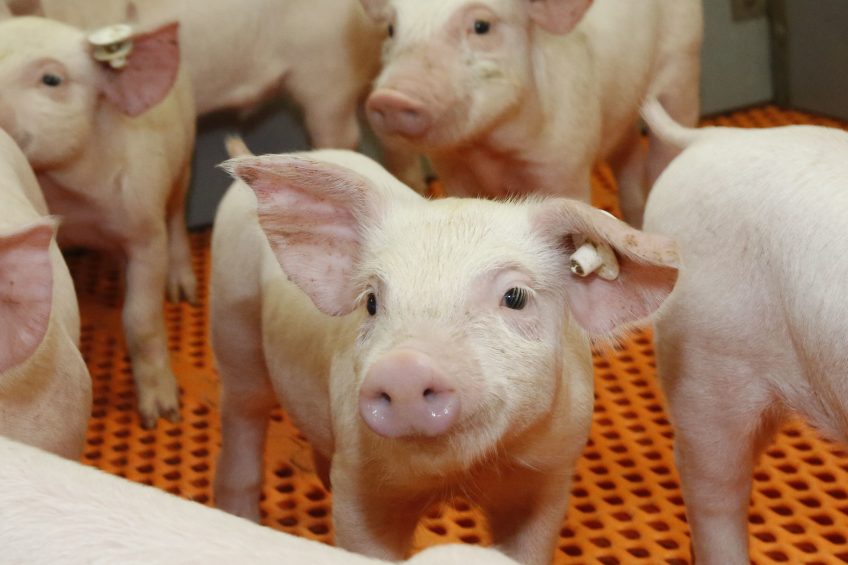Danes search for alternatives to Zn and Cu in weaners

Danish researchers have started a large search in order to discover and describe concepts to find alternatives to the usage of zinc (Zn) and copper (Cu) in weaner pigs.
The principle of concept testing is to invite commercial suppliers and other parties with good (and substantiated) ideas for 3 feeding concepts in the period between 7-30 kg, explained Niels Jørgen Kjeldsen, researcher at the Danish agricultural research organisation SEGES. He would be looking for mixes for piglets between 7-9 kg, 9-15 kg and 15-30 kg.
Inviting interested parties to apply at SEGES before 1 July 2017 by describing the design of their concept in terms of special ingredients or additives, he added, “The concepts can consist of products from different commercial suppliers, as this test concerns concepts, not commercial suppliers. However, only products that are commercially available (i.e. fully developed) are eligible for inclusion in the test.”
Trial design
The trials, which will start in October 2017, will be designed to comprise of 6 groups, Kjeldsen explained in a note to Pig Progress.
1. Positive control = 2,500 ppm zinc from 7 to 9 kg + standard copper from 7 to 30 kg;
2. Negative control = 0 ppm zinc + low copper; and
3. In total, 4 different concepts without zinc and with low copper. In a few groups, it will be possible to use products that are added to drinking water. The basic diet includes xylanase and 200-300% phytase, but no other additives such as for instance organic acids, probiotics, etc.
The pigs used in the trial are purchased at weaning, and it is therefore only possible to include concepts that start at weaning as we are unable to add different components to sow feed and piglet feed. Pigs weighing less than 6 kg are not included in the test.
Productivity and treatments for diarrhoea are recorded in the periods 7-9 kg, 9-15 kg and 15-30 kg, and the production value is determined for the entire trial period 7-30 kg.
Background
The trials are being held against the background of the European Commission currently considering the introduction of a ban on the use of medicinal zinc for weaned pigs. This is based on the concern for negative environmental impacts and development of resistance to bacteria, in particular the methicillin-resistant Staphylococcus aureus (MRSA) bacteria. It is unclear whether a transition period will be introduced, and if so, how long it would last.
It is well known that the addition of 2,500 ppm zinc per kg feed for 14 days post-weaning reduces outbreaks of diarrhoea among weaned pigs, but is has not been established whether the use of medicinal zinc also causes a drop in antibiotic use in the period 7-30 kg. The EU is also questioning the effect of zinc on pig performance in the period 7-30 kg. Thus, only the negative impact on the environment and resistance are being considered whereas the possible positive effects of using medicinal zinc are left uninvestigated.
Alternatives to zinc usage in weaner pigs
In recent years, a range of different additives have been tested to find alternatives to zinc, but as of yet no product (with the exception of antibiotics) has proven to be able to replace zinc. Consequently, new products or different combinations of known products need to be analysed in terms of their effect on diarrhoea, on the overall antibiotic use per pig, and productivity in the period 7-9 kg and the entire growth period 7-30 kg compared with medicinal zinc.
EFSA also proposed reducing copper supply for weaned pigs from 170 ppm to 25 ppm in this period. It is uncertain whether this reduction will be implemented, but it is certain that the addition of copper to pig feed will at some point be reduced and this test will therefore also include a reduction in copper.
Applications and ownership of pig data
Applicants are asked to submit an application that includes well-founded arguments for the effect of the concept, as detailed information as possible on the composition (SEGES is prepared to sign a confidentiality agreement), the price of the concept etc. Participation in the concept test is free, but the additives used in the concepts must be delivered free of charge to SEGES. A committee of SEGES representatives will select the concepts for the test.
The full ownership of data belongs to SEGES, and raw data will not be handed over to any party. SEGES is in charge of conducting the test and writing the final report that will be published regardless of the outcome. SEGES alone draws the conclusions of the test, but the participants will receive a draft report prior to publication. In the writing process, SEGES commits only to correct errors and inaccuracies.
Additional analyses to pig blood or organs
If the participants wish to have additional analyses carried out (blood, organs, stomach, microbiology and other physiological examinations), this can be arranged provided the participants pay for these additional analyses. However, SEGES alone decides which data to publish.
Researcher Niels Jørgen Kjeldsen can be reached at njk@seges.dk.












